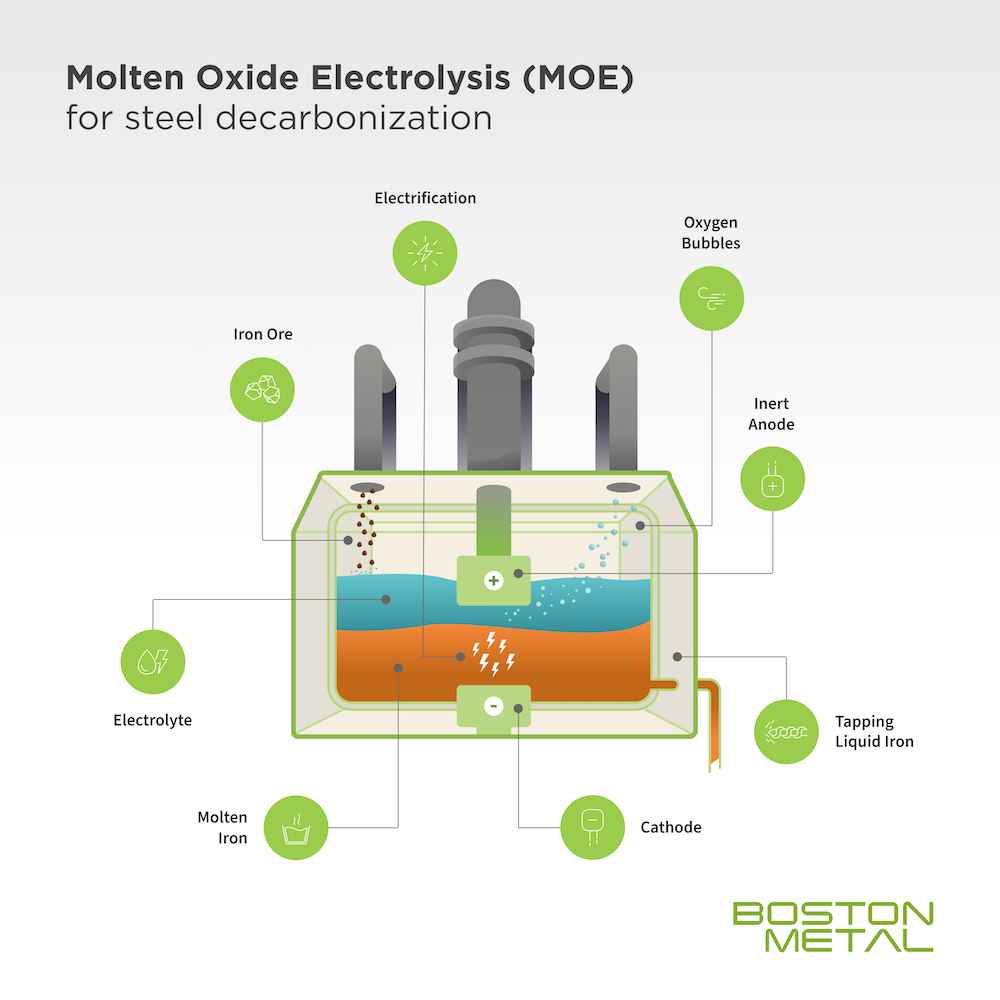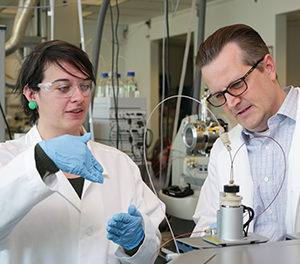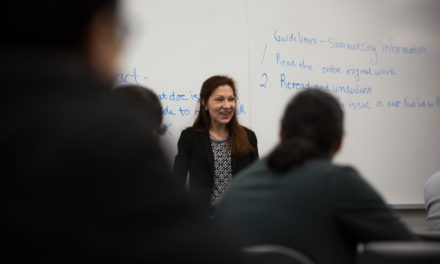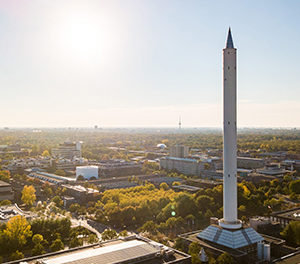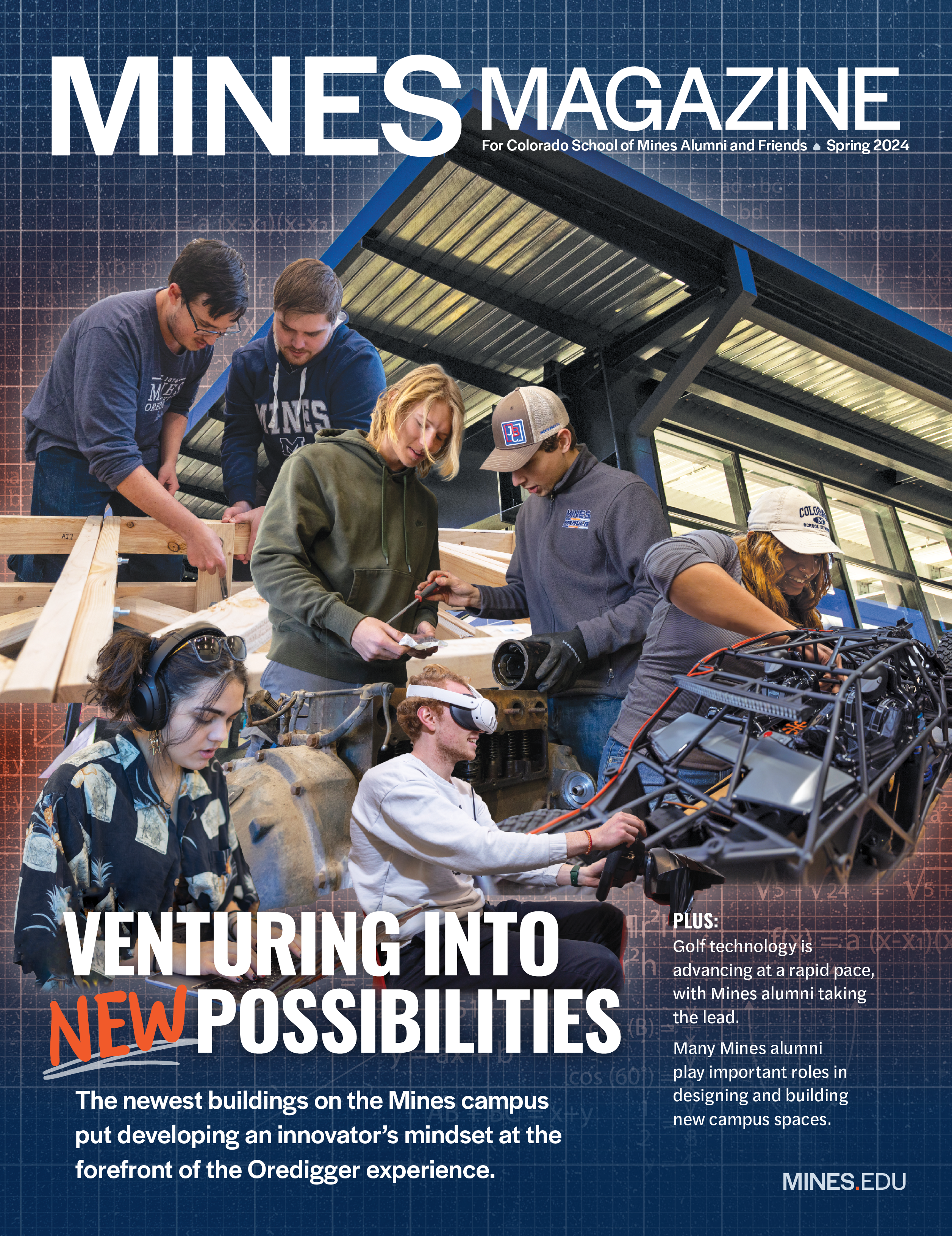Creating a zero-carbon steel future
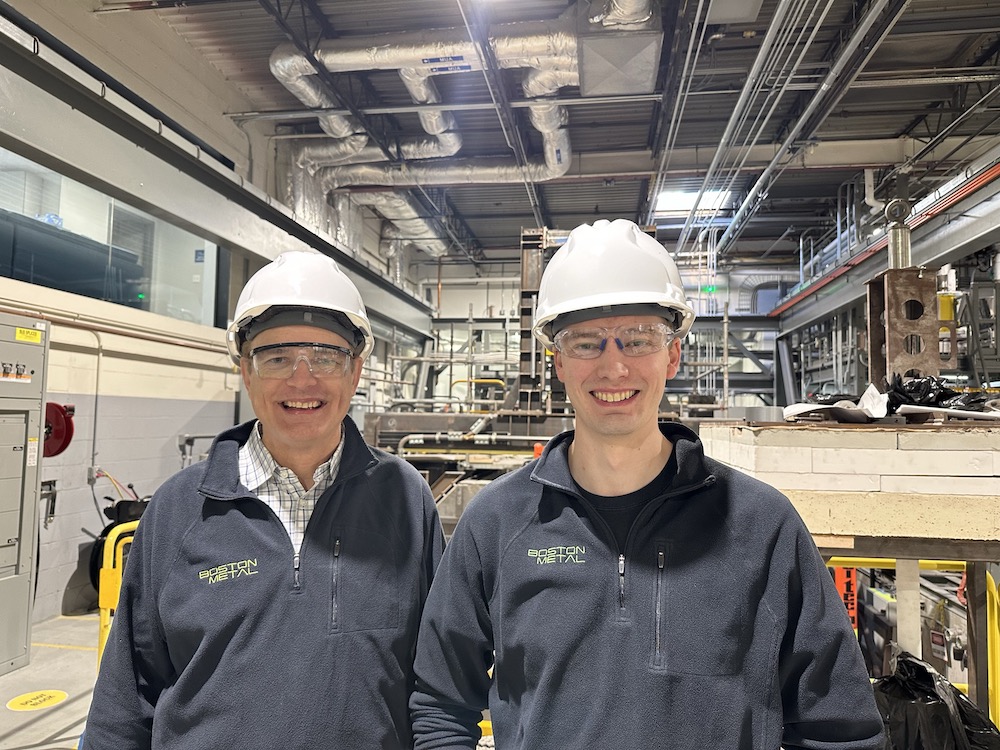
Steel is one of the most important construction materials in the world, giving buildings and bridges a sound structure and adding strength and stability to the most common construction material globally: concrete. Global crude steel production reached nearly 2 billion tons in 2022, and demand is expected to continue to grow in the coming years. But the steel industry creates 11 percent of global carbon emissions and 7 percent of greenhouse gas emissions annually. Though many companies are working toward reducing the industry’s outsized carbon footprint, two Orediggers are lending their expertise to an innovative zero-carbon method of producing the material at green steel startup Boston Metal.
Rather than converting ore to steel through the traditional multi-step, high-heat blast furnace and basic oxygen furnace processes, which are typically powered by coal, Boston Metal’s technology converts ore to steel through electrolysis, which can run on renewable energy. Mines alumni Steve Sparkowich ’89 and Daniel Wright ’21 work on the inert anode team that is at the heart of the molten oxide electrolysis process that the company has patented to eliminate carbon from steel production.
“It’s a unique opportunity to have a lot of impact as a metallurgist,” Wright said.
Molten oxide electrolysis, or MOE, cuts out many of the steps in traditional steel production. In a MOE cell, an inert anode is immersed in electrolyte containing iron ore. Then, it’s electrified. “When the cell heats to 1,600 degrees Celsius, the electrons split the bonds in the iron oxide in the ore, producing liquid metal,” according to a statement from Boston Metal. “Unlike some alternative solutions being developed, MOE does not require process water, hazardous chemicals or precious metal catalysts.”
The inert anode is key to fully eliminating carbon from the process: Unlike traditional graphite anodes, which produce CO2 as a byproduct, the inert anode’s only byproduct is oxygen.
It also provides room for adjustments to the quality of steel the MOE produces. “The inert anode allows us to take feed stocks and convert them to low-grade, or even high-grade, steel in a single step,” said Sparkowich, who is a senior advisory process engineer on the inert anode team. “It’s very elegant, it’s lean, it’s clean and it’s green.”
“We get to try a lot of new alloys that the world’s never seen before—really advanced alloys, pushing the temperature limits. It’s really exciting to move on to the next frontier in materials in this way,” Sparkowich said.
The MOE cell is designed to be both modular and scalable, bringing the steel-making process to where the ore itself is mined and at a scale that makes sense for the operation. Thus the inert anode team’s goals include both manufacturing the anodes for scalability as well as optimizing alloy properties as Boston Metal works toward its goal of bringing the process to the mass market by 2026.
“The goal of the whole technology is producing steel, and though we’re metallurgists, we’re hyper-focused on this anode,” said Wright, a manufacturing program lead whose team is responsible for the manufacture of the anode and improving its performance.
“We have an alloy development team that’s part of our group and then process group—how to make these refractory materials into anodes,” Sparkowich explained. “And then scaling it up, which Daniel’s involved in on the manufacturing side.”
Both alumni said it’s exciting to work in a startup environment that allows them try out new ideas immediately. “Daniel and I can come up with an idea today and have a part on the floor to test tomorrow,” Sparkowich said.
Though they graduated more than 30 years apart, Wright and Sparkowich both said their experience in Mines’ Metallurgical and Materials Engineering Program provided the solid foundation for their careers in metallurgy.
“Colorado School of Mines has always included the fundamentals of metallurgy in their program,” Sparkowich said. “There are very few schools in the U.S. still teaching these things. It’s the core, which we use every day.”
